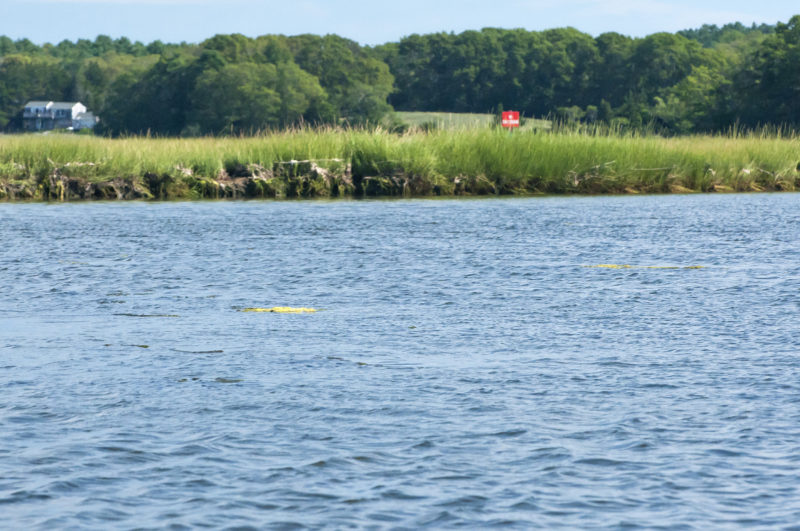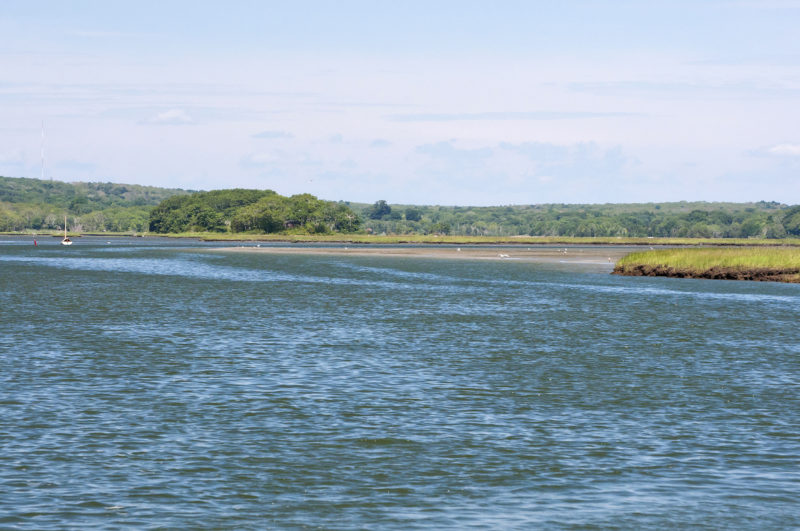U.S. EPA issues nitrogen pollution cleanup plan for Westport Rivers
The U.S. Environmental Protection Agency has issued a long-awaited nitrogen pollution cleanup plan called a Total Maximum Daily Load (TMDL) for the Westport River, setting a course for action to restore clean water, abundant eelgrass beds, and healthy marine life in the rivers by reducing nitrogen.

Nitrogen pollution fuels the growth of algae in places like the Westport River, which has been listed on the state’s “dirty waters list” since 2002.
“It is now federal and state law that nitrogen in the Westport River needs to be reduced,” said Buzzards Bay Coalition President Mark Rasmussen. “We look forward to working with the town of Westport to make these reductions happen by cleaning up nitrogen from septic systems.”
TMDLs are a critical tool against nitrogen pollution, the greatest long-term threat to the health of Buzzards Bay. These state-set pollution limits define exactly how much nitrogen needs to be removed to achieve clean water standards. The Westport River TMDL resulted from a lengthy development process that included two public meetings in Westport over the past year, during which attendees overwhelmingly expressed support for taking action.
The proposed Westport River TMDL calls for 71% of the needed nitrogen reductions to come from improvements to home septic systems, which are the largest source of nitrogen pollution to Buzzards Bay. Even properly functioning Title 5 septic systems – which most homes in Westport use to treat waste – aren’t designed to remove nitrogen from wastewater.
For the past 25 years, the Coalition has been documenting the steady decline of the health of the Westport River through water quality data collected as part of its Baywatchers monitoring program. Last month, the Coalition and the Westport Fishermen’s Association (WFA) released a report showing that the Westport River has lost nearly half of its signature salt marsh islands during the past 80 years. Nitrogen pollution is increasingly being identified as a cause of salt marsh losses along the East Coast.

The Westport Rivers suffer from too much nitrogen pollution from home septic systems, which can lead to cloudy water and loss of habitat for fish and shellfish.
Until now, the Westport River had been languishing on the state’s “dirty waters” list due to nitrogen pollution for an astonishing 15 years. This past winter, the Massachusetts Department of Environmental Protection (MassDEP) developed and submitted a Westport River TMDL to the EPA for final approval. That took place on May 4, after the Coalition and WFA filed a notice of intent to sue the EPA for failure to approve the plan within the Clean Water Act-defined 30-day review period.
Unfortunately, Westport isn’t the only community that’s waiting for a TMDL. Since 2013, MassDEP has been sitting on the scientific information needed to create TMDLs for several other Buzzards Bay estuaries including the Slocums/Little River in Dartmouth and Rands Harbor/Fiddlers Cove, Quissett Harbor, and Wild Harbor in Falmouth. Altogether, 30 Buzzards Bay estuaries need TMDLs due to severe nitrogen pollution. As of today, only three have them.
The longer it takes for the state to issue these pollution limits, the worse the problem gets in our waterways – and the more expensive it’s going to be for our communities to solve it.
MassDEP has committed to issue the Slocums/Little River TMDL for public comment this spring and release draft TMDLs for Rands Harbor/Fiddlers Cove, Quissett Harbor, and Wild Harbor for public comment this summer. We will continue to monitor progress on the development of these nitrogen pollution cleanup plans to make sure that every Buzzards Bay waterway has a path to clean water.